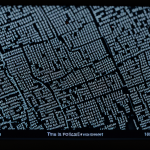The Enduring Legacy of UK Women’s Fashion on Global Trends
UK women’s fashion history is a cornerstone of the global fashion narrative. Throughout a rich fashion timeline, British styles have profoundly shaped international trends, reflecting cultural shifts and societal values. From early Victorian influences to today’s dynamic scene, UK fashion has consistently exported distinct aesthetics and innovations across continents.
The reach of UK women’s fashion extends beyond mere styles, embedding itself into global wardrobes with garments like the iconic trench coat and miniskirt—both born from British ingenuity. This timeline showcases how British design and tailoring excellence cultivated worldwide appeal, turning UK fashion into a benchmark of quality and creativity.
Also to discover : How Can UK Women Master the Art of Mixing High Street with Designer Fashion?
Significantly, this legacy thrives on a continuous cross-cultural exchange. UK designers draw inspiration from international sources while simultaneously introducing British elements globally. This reciprocal flow underpins the UK’s sustained relevance in fashion evolution. It brings forth a diverse spectrum of styles, from traditional tartan to cutting-edge streetwear, underscoring the adaptability and influence of UK women’s fashion history on a global scale.
Pioneering Eras: Victorian to Post-War Innovation
UK women’s fashion history during the Victorian fashion period set foundational styles that influenced global dress codes. Characterized by intricate detailing, corsetry, and layered skirts, Victorian attire embodied both elegance and social hierarchy, becoming a template for many Western countries. This era’s fashion was not static; it evolved into Edwardian styles that emphasized a softer silhouette, yet retained British refinement. Such fashions were disseminated worldwide through imperial connections and cultural exchange.
Also to discover : How Does British Women’s Fashion Impact Cultural Identity?
The British fashion heritage extended into the early 20th century, where British couture and tailoring achieved international acclaim. Tailors and designers perfected techniques that balanced structure with femininity, influencing global women’s wear standards. Post-war style further revolutionized UK women’s fashion history, marked by designers who introduced innovative silhouettes that liberated women’s movements and reflected changing societal roles.
The post-war period’s impact on fashion was transformative: it brought forward practical yet stylish garments that resonated globally. This era’s styles anticipated contemporary trends, demonstrating the UK’s vital role in evolving women’s wear and establishing enduring international relevance in the global fashion influence.
The Mod Revolution and Youthquake Movement
London in the 1960s became the vibrant epicenter of 1960s mod fashion and the dynamic youth culture that fueled widespread change. This era marked a radical departure from traditional UK women’s fashion history, embracing youthful rebellion and innovation. The London fashion scene thrived with boutiques like Biba and designers such as Mary Quant, who popularized the miniskirt—a defining symbol of the Mod look.
How did the Mod movement reshape global fashion influence? It did so by merging bold silhouettes, bright colours, and modern fabrics that energized wardrobes far beyond the UK. This youth-driven wave promoted individuality and encouraged experimentation, setting patterns that reverberate in today’s streetwear and high fashion.
The youthquake movement also fostered a new international appreciation for British style, inspiring fashion hubs worldwide. The continued relevance of 1960s British subcultures is clear in how contemporary designers revisit and reinterpret their edgy and playful aesthetics. These trends demonstrate the enduring cross-cultural exchange UK women’s fashion history nurtured during this transformative decade, cementing the UK’s role as a pioneering force in global fashion influence.
Punk, New Romantic, and Street Style Influence
Punk fashion UK emerged in the mid-1970s as a bold subcultural aesthetic that rapidly gained global fashion influence. Its rebellious spirit, characterized by aggressive tailoring, DIY modifications, and provocative symbolism, challenged traditional fashion norms. This style was pioneered by UK designers and the London fashion scene, with figures like Vivienne Westwood at the forefront, shaping a new, confrontational visual language. Punk’s impact goes beyond mere clothing; it signaled social upheaval and inspired diverse international street style movements.
Alongside punk, the New Romantic movement introduced a theatrical, flamboyant contrast in UK women’s fashion history. Drawing from historical costumes and romantic ideals, it emphasized luxury fabrics, dramatic silhouettes, and elaborate accessories. This style permeated global fashion, influencing designers and mainstream trends during the early 1980s.
UK street style influence continues to evolve as a dynamic force that informs both high fashion and everyday wear. The street style lens captures eclectic, individualized looks rooted in past subcultures. Today, designers incorporate punk and New Romantic elements into collections, evidencing the enduring interplay between UK subcultural styles and global fashion influence. This ongoing dialogue underscores the robust legacy and adaptability of UK women’s fashion history.
The Enduring Legacy of UK Women’s Fashion on Global Trends
UK women’s fashion history holds a pivotal role in shaping the global fashion influence seen today. From early developments through various defining periods, the UK has continuously exported styles that resonate internationally. This fashion timeline reveals how British innovation, quality tailoring, and cultural creativity have left an indelible mark on worldwide wardrobes.
Each era brought new dimensions to UK fashion’s global impact. Victorian fashion’s detailed craftsmanship set early standards, while the Mod revolution and punk movements introduced bold, youth-driven expressions. This chronological progression illustrates the UK’s ability to adapt and lead, underscoring the lasting importance of its fashion industry in broader global trends.
Central to this legacy is a thriving cross-cultural exchange. British designers absorb influences from around the world, transforming them into unique creations that are then re-exported globally. This dynamic interplay sustains UK fashion’s relevance and richness, enabling continued innovation and exportation of styles that shape international markets.
In summary, UK women’s fashion history demonstrates an enduring global fashion influence through its evolving styles, cultural relevance, and ongoing dialogue with worldwide trends, confirming its place as a cornerstone of global fashion development.
The Enduring Legacy of UK Women’s Fashion on Global Trends
UK women’s fashion history stands as a powerful force behind global fashion influence. This influence spans a broad fashion timeline, from intricate Victorian fashion to the bold statements of recent decades. Each era introduced defining elements that reshaped international style norms and broadened the reach of British aesthetics worldwide.
Key to this legacy is the UK’s ability to maintain a vibrant dialogue with global fashion movements. The continual cross-cultural exchange fuels innovation, with UK designers both inspiring and adopting trends. This constant interaction keeps the UK women’s fashion history dynamic, ensuring its styles resonate well beyond British borders.
Throughout history, British craftsmanship and creativity have set quality benchmarks that other cultures admire and emulate. From tailoring excellence to avant-garde designs, UK women’s fashion has influenced everything from casual streetwear to luxury fashion, affecting wardrobes around the world.
Ultimately, the sustained global fashion influence of UK women’s fashion history reflects the nation’s adaptability and cultural openness. Its evolving styles invite continuous reinterpretation, securing Britain’s role at the forefront of the international fashion landscape.
The Enduring Legacy of UK Women’s Fashion on Global Trends
UK women’s fashion history has left a profound imprint on the global fashion influence witnessed today. This influence unfolds across an extensive fashion timeline, demonstrating the UK’s pivotal role in setting style standards worldwide. Beginning with Victorian fashion’s intricate designs, each successive era introduced new trends that reshaped global aesthetics.
How did UK fashion maintain such enduring global appeal? The answer lies in its continuous innovation paired with a robust cross-cultural exchange. British designers consistently absorbed international trends while exporting distinctive styles, creating a dynamic dialogue that fueled fresh creativity. This ongoing interaction ensured UK women’s fashion history remained relevant and influential far beyond its borders.
The breadth of this impact is notable—from the early adoption of British tailoring excellence to revolutionary 1960s mod fashion and the rebellious punk movement. Each period contributed distinct elements that permeated international wardrobes, reinforcing the UK’s status as a fashion trendsetter.
Throughout this timeline, the adaptability of UK women’s fashion proved key. Its ability to evolve while respecting heritage enabled the UK to influence everything from haute couture to streetwear, securing lasting global fashion influence and affirming its crucial place in the international style hierarchy.



